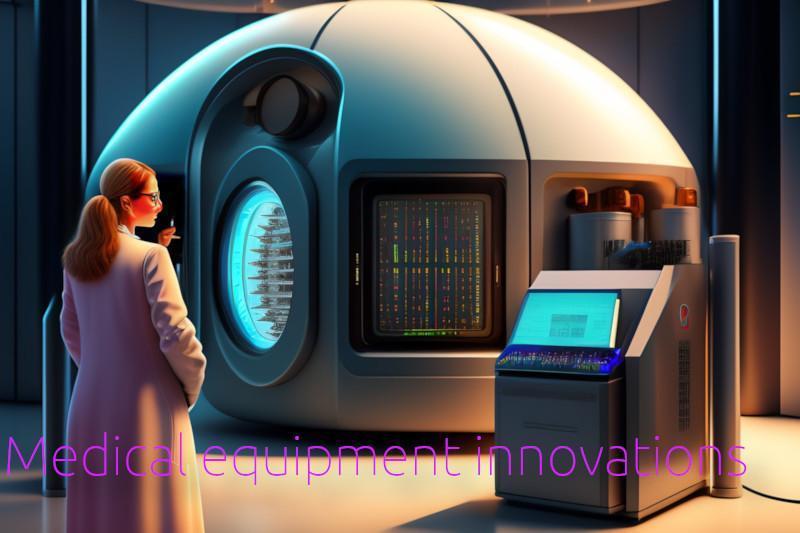


For individuals with disabilities, accessing the world around them can present unique challenges. However, advancements in adaptive equipment have opened doors to greater independence and improved quality of life. In this comprehensive guide, we will explore the diverse needs of disabled individuals and introduce a variety of adaptive equipment designed to enhance mobility, accessibility, and overall well-being.
Understanding Diverse Abilities:
The term "disability" encompasses a wide range of conditions, each affecting individuals differently. It's crucial to recognize the diversity of abilities and understand that adaptive solutions can be tailored to specific needs, whether physical, sensory, or cognitive.
Mobility Aids:
Mobility aids play a crucial role in enhancing the independence of individuals with mobility challenges. Wheelchairs, walkers, canes, and crutches are among the common aids designed to provide stability and support. Choosing the right mobility aid depends on the individual's specific needs and preferences.
Assistive Technology:
Assistive technology spans a broad spectrum of tools and devices designed to assist people with disabilities. This includes communication devices, screen readers, voice recognition software, and adaptive computer peripherals. Explore the vast array of assistive technology options to enhance accessibility and communication.
Accessible Home Modifications:
Creating an accessible home environment is paramount for individuals with disabilities. Consider home modifications such as ramps, widened doorways, and grab bars to improve accessibility. Adapting living spaces to meet specific needs fosters a sense of independence and safety.
Adaptive Seating and Positioning:
Individuals with mobility challenges often benefit from adaptive seating and positioning systems. These can include customized wheelchairs with specialized cushions, adjustable seating, and positioning aids to enhance comfort and support for various activities.
Hearing Aids and Cochlear Implants:
For individuals with hearing impairments, hearing aids and cochlear implants offer transformative solutions. These devices amplify sound and improve communication, allowing individuals to engage more fully in social and professional settings.
Visual Aids:
Visual impairments can be mitigated with the use of various visual aids. Braille devices, magnifiers, screen readers, and specialized computer software empower individuals with visual challenges to access information and navigate their surroundings effectively.
Accessible Transportation:
Accessible transportation options are essential for fostering independence beyond the home. Wheelchair-accessible vehicles, public transportation with ramps and lifts, and ride-sharing services with accessibility features contribute to greater mobility for disabled individuals.
Therapeutic and Recreational Equipment:
Therapeutic and recreational equipment caters to the well-being and enjoyment of individuals with disabilities. Adaptive sports equipment, modified exercise machines, and therapeutic tools contribute to physical health and a fulfilling lifestyle.
Embracing Inclusive Design:
Inclusive design principles prioritize creating products and environments that are accessible to people of all abilities. Advocate for inclusive design in public spaces, workplaces, and community facilities to ensure accessibility for everyone.
Community Support and Resources:
Engage with local disability support organizations and community resources. These groups can provide valuable information, support networks, and assistance in accessing adaptive equipment and services.
Advocacy and Accessibility Awareness:
Advocate for accessibility and inclusion within your community. Promote awareness about the diverse needs of individuals with disabilities, encouraging businesses and public spaces to adopt inclusive practices.
There is a wide range of medical equipment and goods available to help disabled people live more independently and comfortably. Here are some examples:
Mobility aids: This includes equipment such as wheelchairs, walkers, crutches, and canes to help people with mobility issues get around.
Home modifications: This includes modifications such as wheelchair ramps, grab bars, and stair lifts to make homes more accessible for people with disabilities.
Hearing aids: These devices help people with hearing loss to hear more clearly.
Communication devices: These devices help people with speech difficulties to communicate, such as text-to-speech software and speech-generating devices.
Daily living aids: This includes equipment such as specialized eating utensils, dressing aids, and bathroom safety equipment to help people with disabilities perform daily tasks more easily.
Medical alert systems: These devices allow people to quickly call for help in case of a medical emergency.
Assistive technology: This includes specialized devices such as computer software, screen readers, and braille displays to help people with visual impairments or other disabilities use technology.
It is important to work with healthcare providers and specialists to determine which equipment and goods are appropriate for individual needs. Many of these products can be purchased through medical supply companies or online retailers.
Medical equipment is constantly evolving and improving with the latest technology. Here are some recent innovations in medical equipment:
3D Printing: 3D printing technology is being used to create custom prosthetics, surgical tools, and implants.
Wearable Medical Devices: Wearable devices such as smartwatches and fitness trackers are being developed to monitor vital signs, detect diseases, and manage chronic conditions.
Artificial Intelligence: AI is being used to analyze medical data and provide personalized treatment plans, and to assist in image and diagnostic interpretation.
Robotics: Robotic surgical tools are being developed to perform minimally invasive procedures with greater precision and control.
Telemedicine: Telemedicine technology is allowing patients to connect with healthcare providers remotely, which is especially important for people living in rural or remote areas.
Smart Pill Technology: Smart pills contain sensors that can track medication adherence and provide real-time data on a patient’s health.
Virtual Reality: Virtual reality technology is being used to treat conditions such as anxiety disorders, PTSD, and chronic pain.
As technology continues to advance, we can expect to see even more exciting developments in the future.
There are many recent innovations in medical equipment and assistive technology that are aimed at helping people with disabilities to live more independently and comfortably. Here are some examples:
Prosthetics: Advances in prosthetic technology have made it possible to create more lifelike and functional prosthetic limbs, including those that can be controlled by the user's thoughts.
Exoskeletons: Exoskeletons are wearable devices that can assist people with mobility impairments, allowing them to stand and walk with greater ease and stability.
Smart Homes: Smart home technology can be customized to meet the needs of people with disabilities, such as voice-activated controls, automated lighting and temperature controls, and smart appliances.
Brain-Computer Interfaces: These devices allow people with severe physical disabilities to control computers and other devices using their thoughts.
Assistive Robots: Robots are being developed to help people with disabilities with tasks such as housekeeping, grocery shopping, and personal care.
Wheelchair Innovations: Wheelchair technology is constantly evolving, with new designs and features to improve mobility, stability, and comfort for users.
Augmented Reality: Augmented reality technology can be used to provide visual and auditory cues to help people with cognitive impairments navigate their environment.
Medical equipment and goods for disabled people can have a profound impact on their quality of life by enabling them to perform activities of daily living with greater ease, independence, and comfort. Here are some examples:
Increased Mobility: Mobility devices such as wheelchairs, walkers, and mobility scooters can help people with mobility impairments to move around more easily, allowing them to participate in social activities, travel, and pursue their interests.
Improved Communication: Communication devices such as speech-generating devices, voice amplifiers, and text-to-speech software can help people with speech and language impairments to communicate more effectively.
Personal Care: Assistive devices such as shower chairs, transfer benches, and lift systems can make personal care tasks such as bathing, toileting, and dressing easier and more comfortable.
Environmental Control: Environmental control devices such as smart home technology, voice-activated controls, and remote switches can help people with physical disabilities to control their environment, such as turning on/off lights, opening/closing doors, and adjusting the thermostat.
Increased Independence: Medical equipment and goods for disabled people can help them to be more independent, reducing their reliance on caregivers and increasing their autonomy.
Medical equipment and goods for disabled people can have a transformative impact on their quality of life, allowing them to live more independently, participate in their communities, and pursue their interests and passions.
Empowering individuals with disabilities involves recognizing diverse abilities, embracing adaptive solutions, and advocating for inclusive design. The array of adaptive equipment available today opens doors to greater independence, ensuring that individuals with disabilities can navigate the world with dignity and autonomy. By fostering a culture of accessibility and support, we contribute to a more inclusive and equitable society for everyone.
Sincerely yours,

We use cookies
We use cookies and other tracking technologies to improve your browsing experience on our website, to show you personalized content and targeted ads, to analyze our website traffic, and to understand where our visitors are coming from. Privacy Policy.